The Big Time (1958)
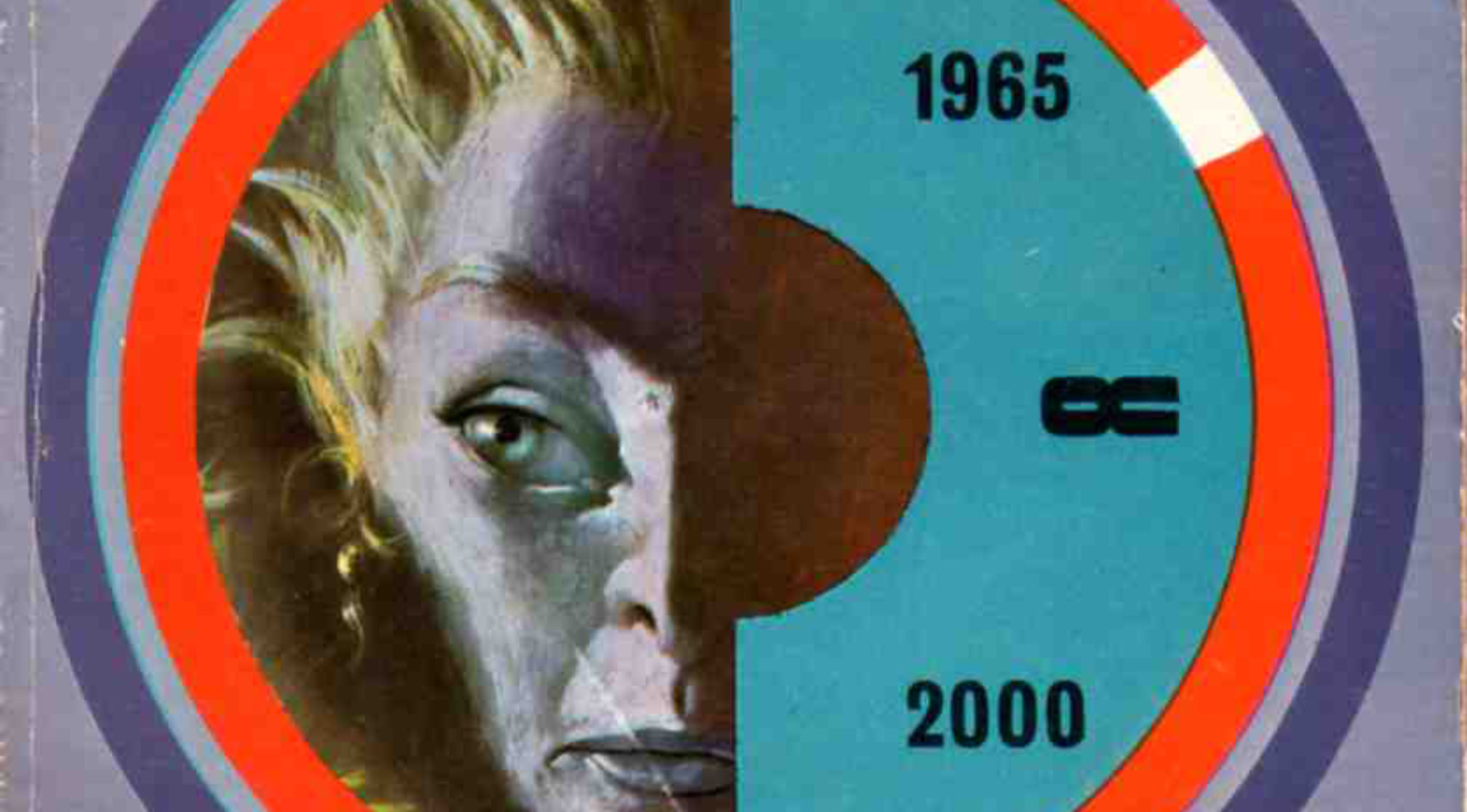
The fourth Annual Science Fiction Achievement Awards were presented in 1957 at Loncon, in London. However, for some reason the organisers that year decided not to include any of the fiction categories, instead just honouring the magazines of fandom, so we’ll be skipping 1957 and jumping forward to Solacon in 1958.
Solacon was an interesting WorldCon. As well as hosting the fifth Science Fiction Achievement Awards, it also incorporated Westercon 11 (another annual convention named for the fact it was always hosted west of the 104th Meridian) and consequently shared Guests of Honour and Chairmen with that convention. And while it was physically hosted in San Francisco, it was technically identified as being held in South Gate, California, simply so the organisers could make good on their bid slogan of “South Gate in ’58.”
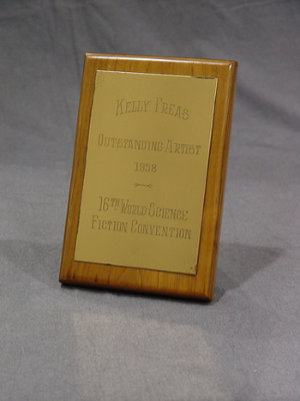
Another oddity in ’58 was the design of the Hugo trophy. The now obligatory shiny retro rocket ship that has graced almost every Hugo trophy since the first was conspicuously absent in 1958, replaced by what can only be described as a bland and somewhat lazy inscribed plaque stuck to a nicely polished bit of wood. Now, to be fair, to the winners this probably didn’t make too much of a difference, especially as this was only the fifth time the awards had been given out, but in hindsight the 1958 trophy has to be one of the most underwhelming so far.
Once again abandoning the idea of shortlists for attendees to choose from, though the WorldCon membership did get to vote for winners. As there was no shortlist that year, it’s hard to say with any certainty what other works might have been in with a chance of winning the award for Best Novel, but in the end the members of Solacon (and Westercon 11) voted to give the trophy to Fritz Leiber’s The Big Time.
The Author: Fritz Leiber (1910-1992)
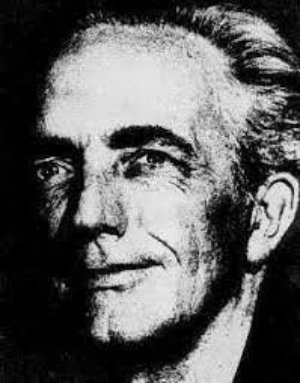
Fritz Reuter Leiber Jr. had already made something of a name for himself when he won his first Hugo Award. The son of the actor Fritz Leiber Sr., he has sometimes been mistakenly credited for his father’s acting work, though he did manage to make his way on to the screen a few times before becoming a writer, and while he continued to step in front of the camera from time to time, it was the writing that he became best known for.
Heavily influenced by Lovecraft, Robert Graves, and William Shakespeare, Leiber’s early works had an almost theatrical quality to them, especially in the way they are presented and framed. In the late ’50s he was also increasingly influenced by the works and concepts of Carl Jung, and later still he began to include references to Campbell’s idea of the monomyth from The Hero With a Thousand Faces.
In the ’60s he was a founding member of the Swordsmen and Sorcerers’ Guild of America (SAGA), along with Lin Carter, and is credited with coining the phrase ‘sword and sorcery’ with respect to the particular subgenre of fantasy exemplified by the tales of Fafhrd and Gray Mouser.
His earlier stories were clearly influenced by Lovecraft’s Cthulhu mythos, though it was thanks to works such as Conjure Wife (1943), Gather, Darkness (1943), and the various stories of the aforementioned Fafhrd and Gray Mouser (collected as Two Sought Adventure in 1957) that he gained the most respect and recognition from fans and peers alike. While The Big Time was his first Hugo win, he would be nominated for dozens of genre awards going forward, and would pick up a second Hugo Award in 1965 for The Wanderer.
Over the years he has been honoured with dozens of genre awards, including being named the second Gandalf Grand Master of Fantasy in 1975, the World Fantasy Award for Life Achievement in 1976, and the fifth SFWA Grand Master in 1981. He was inducted into the Science Fiction and Fantasy Hall of Fame in 2001.
The Book: The Big Time (1958)
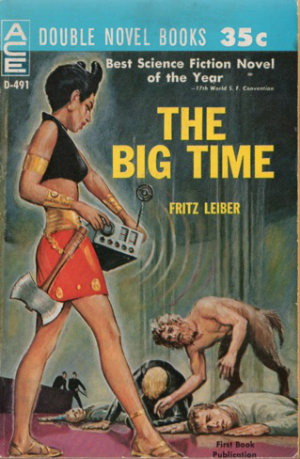
Originally serialised in the March and April 1958 issues of Galaxy Science Fiction (May/June in the UK), and then published in book form in 1961 as part of the Ace Double Series along with Leiber’s The Mind Spider and Other Stories, The Big Time is set during a war between two factions, the Spiders and the Snakes. This war, known by its participants as The Change War, takes place outside of linear time, with soldiers on both sides being drawn from throughout the past, present, and future, human or otherwise. The battles fought aren’t for physical territory, but for temporal gain, with each conflict changing the flow of time and altering history, resulting in one instance in a world where the Axis powers won the Second World War.
The main protagonist is Greta, a young woman employed at a Recuperation Station, referred to within the story as ‘The Place’, as an Entertainer: part nurse, part psychologist, and part prostitute, there to help the soldiers relax between engagements, and for the most part the story is told through her narration, albeit with lengthy monologues from other characters providing alternative points of view. Through Greta’s eyes, we first learn of the Change War, and the disconnect between Little Time (what we consider linear time), and the Big Time, which is described metaphorically by Greta as a train travelling through the countryside of the Little Time. However, once the backstory has been established, the theme soon changes, with the arrival at The Place of a second group of soldiers, brining with them a weapon of mass destruction, a locked time bomb that threatens the very existence of The Place.
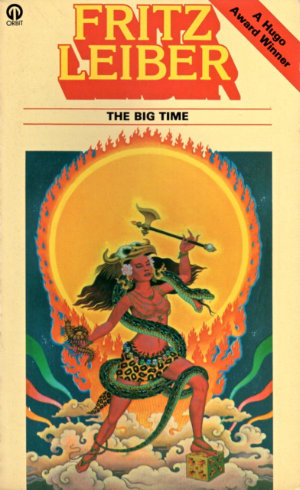
The rest of the story is essentially a locked room mystery, albeit one cast upon a science fiction stage, complete with plenty of techno-jargon and a few suitably enigmatic McGuffins to provide the appropriate colour. The reader is invited to find the answers along with the narrator, and the clues to unlocking the mystery are there if you know what to look for. However, those clues are so masterfully hidden that even on a second or third reading of the text you could be forgiven for missing one or more.
The Review
It’s hard to deny this book’s brilliance, even sixty years after its initial publication. Sure, the language is very much of its time, but the premise and execution of the story were revolutionary in 1958, and even now there are few writers who could manage what Leiber does in so few words. He masterfully employs distraction and turnabout throughout the narrative to keep the reader on their toes, and by using a first person point of view is able to almost hide the clues to the novel’s ultimate solution in plain sight. Even once you know the answer to the puzzle, you can still enjoy the text simply for its own sake.
Conclusion
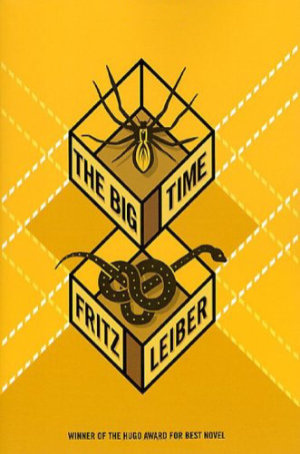
Did it deserve the Hugo in 1958? Definitely. While there was a number of excellent contenders for the award that year, it’s hard to deny the worthiness of The Big Time. It has since gone on to influence a number of similar works, including Poul Anderson’s Corridors of Time (1965), and is cited as an influence on the album Dreams of Spiders and Snakes (2016) by Misha Kolesoski.
Leiber would go on to win his second Best Novel Hugo in 1965 for The Wanderer, along with several Hugos for Best Novella and Best Novelette, and a few Nebula Awards over the years. Sadly, few modern readers will have heard of this novel, or even of Leiber himself, which is something of a shame. He was such an influential writer in the SFF field that he really should get more recognition.
Coming Next
In 1959 the Hugo Awards started to look a lot like the awards we have today, with a shortlist and everything. Next time on Hugo Retrospectives, we’ll be looking at that year’s winner, A Case of Conscience by James Blish, a tale of God and religion amongst the stars.